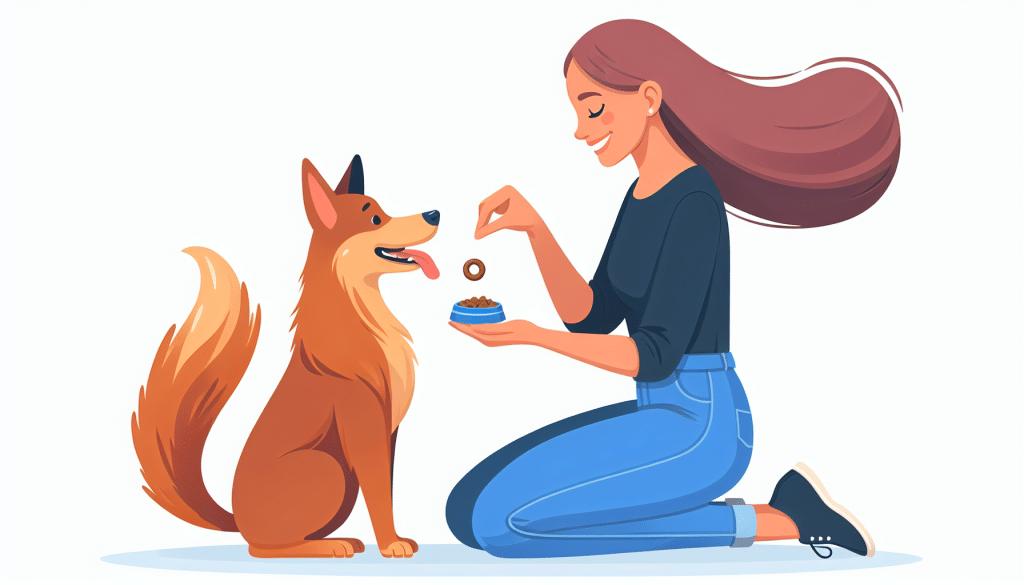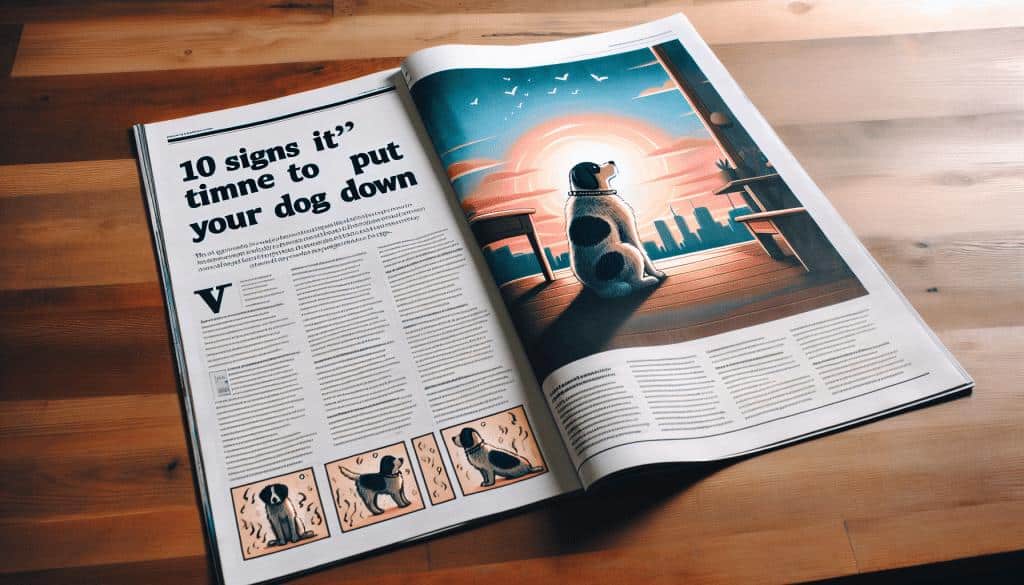So you’ve got a furry friend who just can’t resist leaping onto every person they meet? Don’t worry, you’re not alone. In this article, we’ll explore some effective methods to teach your dog to keep all four paws on the ground when greeting people. Whether you’re dealing with an overly excited puppy or a well-meaning adult dog with a jumping habit, we’ve got you covered with practical tips and techniques to curb this behavior. Say goodbye to those embarrassing moments and hello to a well-mannered dog who knows how to make a friendly introduction without pouncing on unsuspecting guests.

Understanding Why Dogs Jump
Jumping is a common behavior in dogs that can vary in its underlying reasons. It is essential to comprehend why dogs jump to effectively address and modify this behavior. Dogs naturally have an instinctual behavior of jumping, which stems from their pack mentality and socialization dynamics.
Recognizing instinctual behavior
Jumping is instinctual for dogs as it is a way for them to establish dominance and acknowledge their position within the pack. In a dog’s mind, jumping up towards a person might be seen as a display of submission or an attempt to be equal to their human companion. The act of jumping can also stem from excitement, especially when welcoming someone home or during playtime.
Exploring communication and socialization dynamics
Jumping is a form of communication for dogs. By jumping, they aim to connect physically with their human companions, greet them, or simply seek attention. Jumping can also be a way for dogs to demonstrate their socialization skills, as it is often performed among other dogs during playtime.
Examining the role of excitement in jumping behavior
Excitement plays a crucial role in a dog’s jumping behavior. Dogs have a remarkable ability to feed off their human’s emotions, and when they sense excitement, they may mirror that enthusiasm by jumping up. Understanding this connection between excitement and jumping is important when addressing and modifying this behavior.
Start Training Early
To effectively prevent and modify jumping behavior, it is crucial to start training your dog early on. Starting as a puppy allows them to develop good habits and understand the expectations placed upon them. However, if you have an older dog, it is not too late to address jumping behavior; it may just require extra patience and dedication.
Importance of starting as a puppy
Puppies have a natural curiosity and desire to learn. By starting training early, you can effectively instill good behaviors and prevent negative ones from developing. It is much easier to modify and shape a puppy’s behavior than it is to correct ingrained patterns in an older dog.
Challenges with older dogs and tips to succeed
Working with older dogs can present certain challenges when addressing jumping behavior. Older dogs may have ingrained habits and may be more resistant to change. Patience, consistency, and positive reinforcement are key when training older dogs. It is important to provide clear expectations and rewards for desired behavior to encourage progress.

Teaching your Dog to Sit and Stay
One of the fundamental commands to teach your dog is to sit and stay. Mastering these basic commands not only helps prevent jumping but also establishes a foundation for other obedience training.
Basic command training
Teaching your dog to sit and stay involves positive reinforcement and consistency. Start by using treats to lure your dog into a sitting position and reward them when they successfully follow the command. Gradually increase the duration of stay and phase out the use of treats over time.
Benefits of mastering sit and stay
By teaching your dog to sit and stay, you provide them with an alternative behavior to jumping. Sitting and staying can redirect their attention and energy, preventing them from jumping up on people. Additionally, it promotes impulse control and strengthens the bond between you and your dog.
The Four on The Floor Technique
The Four on The Floor technique is an effective method to discourage jumping behavior. This technique emphasizes the importance of teaching dogs to keep all four paws on the ground when greeting people.
Understanding the technique
The Four on The Floor technique focuses on rewarding and reinforcing behaviors where the dog remains grounded. By teaching them that jumping does not garner attention or rewards, you can help redirect their behavior towards more acceptable greetings.
Steps to implement the Four on the Floor technique
To implement the Four on The Floor technique, start by using visual cues and commands to encourage your dog to stay on the ground. Reward your dog with treats and praise when they keep all four paws on the floor during greetings. Consistency is key to reinforcing this behavior.
When to use this technique
The Four on The Floor technique is effective during socialization and greetings. Encourage family members, friends, and visitors to use the technique consistently to help reinforce the desired behavior. By implementing this technique, you can gradually rewire your dog’s automatic response from jumping to staying grounded.

Consistency is Key
Consistency is crucial in addressing and modifying jumping behavior effectively. It ensures that your dog understands the expectations and maintains a clear understanding of what is rewarded and discouraged.
Why consistent responses matter
Consistent responses are essential in dog training because they help establish clear boundaries and expectations. If one person allows jumping while another discourages it, the dog may become confused and revert to old habits. Consistency creates a predictable environment that aids in modifying behavior.
Working with all family members and guests
Getting everyone on board is crucial in maintaining consistency. It is important to educate all family members, as well as frequent guests, on the desired behavior and how to respond appropriately. By ensuring that everyone follows the same guidelines, your dog will have a better chance of understanding and complying with expectations.
Handling setbacks in training
Setbacks are a normal part of the training process, especially when dealing with jumping behavior. It is essential to stay patient and consistent, reinforcing the desired behavior and redirecting your dog when they jump. By consistently addressing and correcting the behavior, setbacks can be minimized, and progress can be achieved.
Avoiding Encouragement of Jumping
Unintentional reinforcement of jumping behavior can further reinforce and encourage the habit. It is important to identify unintentional reinforcement and take steps to prevent it.
Recognizing unintentional reinforcement
Unintentional reinforcement can occur when dogs receive attention, affection, or rewards for jumping. If a dog jumps and receives attention, even if it is reprimanding or pushing them away, they might perceive it as a successful interaction and continue jumping.
Training family members and visitors not to encourage jumping
Educating family members and frequent visitors on the importance of not encouraging jumping is vital. Teach them alternative ways to interact with your dog such as petting them when they are calm and praising them for staying grounded. By replacing unintentional reinforcement with positive reinforcement for desired behaviors, you can break the cycle of jumping.
Preventive steps to avoid reinforcing bad behaviors
Prevention is key to avoid reinforcing bad behaviors. If you know that your dog has a tendency to jump when excited, take proactive steps to redirect their attention and energy. Engage them in activities such as playing with toys or asking them to perform commands to keep them calm and focused.
Introducing an Alternate Greeting
Teaching your dog an alternate greeting routine is an effective way to redirect their jumping behavior. By teaching them to sit when greeting people, you can create a polite and controlled interaction.
Developing a polite greeting routine
Developing a polite greeting routine involves teaching your dog to sit before any interaction occurs. Encourage guests and family members to wait until your dog is sitting before they offer attention or affection. Consistently rewarding this polite behavior will help reinforce the desired response.
Teaching the dog to sit when greeting
To teach your dog to sit when greeting, start by using treats and verbal cues to encourage them to sit. Gradually phase out the treats and use verbal cues alone. Be patient and consistent in reinforcing the sit behavior during greetings to establish it as the default behavior.
Using treats and rewards
Treats and rewards play a significant role in teaching your dog to sit when greeting. Rewarding them with praise, treats, or a favorite toy when they successfully sit reinforces the desired behavior. Gradually decrease the frequency of treat rewards as your dog becomes more consistent in their response.
Utilizing Professional Training Services
In some cases, professional assistance may be advantageous when dealing with jumping behavior. Professional trainers can provide guidance, expertise, and tailored solutions to address specific issues.
When to consider professional help
If your dog’s jumping behavior persists despite your efforts or if it becomes a safety concern, seeking professional help is recommended. Professional trainers can assess your dog’s behavior, identify underlying causes, and develop a customized training plan to address the issue effectively.
Types of professional training services
When seeking professional help, there are various types of training services available. These can include individual sessions, group classes, or even online consultations. Depending on your dog’s specific needs and your preferences, you can choose the best training service to address jumping behavior.
Benefits of professional training
Professional training provides valuable expertise and guidance, increasing your chances of successfully addressing jumping behavior. Trainers can offer insights on dog behavior, teach effective training techniques, and provide ongoing support throughout the training process. Utilizing professional training services can help expedite progress and ensure a positive outcome.
Tools and Gadgets to Assist With Training
Certain tools and gadgets can assist in training your dog to prevent jumping behaviors. These tools are designed to provide additional control and guidance during the training process.
Using barriers and crates
Barriers and crates can be useful tools in managing and preventing jumping behavior. They can help create boundaries and restrict access to certain areas, allowing you to control and redirect your dog’s behavior. When properly introduced and used, barriers and crates provide a safe and secure environment for both you and your dog.
Electronic training collars: Pros and Cons
Electronic training collars, also known as e-collars, can provide additional control during training. These collars emit a mild electric shock as a correctional tool. While some trainers find them effective for addressing jumping behavior, it is crucial to use them responsibly and consult with a professional trainer to ensure proper usage.
Harnesses and leashes for better control
Using a well-fitted harness and leash can aid in controlling your dog’s jumping behavior. A well-constructed harness and a sturdy leash ensure that you have physical control over your dog, allowing you to redirect their focus and movement. By gently guiding your dog’s behavior with a harness and leash, you can effectively prevent jumping.
Dealing with Persistent Jumping
Persistent jumping can be a challenging behavior to address, especially if it has become deeply ingrained. It is important to understand dog personality differences and adjust your approach accordingly.
Understanding dog personality differences
Different dogs have different personalities and temperaments, which can influence their response to training. Some dogs may be more persistent and resistant to change, requiring extra patience and a customized training approach. Understanding your dog’s unique personality can help you tailor your training methods for optimal results.
Recognizing entrenched behaviors and dealing with them
Persistent jumping often indicates deeply entrenched behaviors that may require specialized training techniques. Professional trainers can assist in identifying and addressing these behaviors, using techniques such as desensitization and counter-conditioning. Be prepared for a longer training process and stay committed to addressing the behavior.
Adjusting your approach based on your dog’s reactions and behavior
Flexibility and adaptability are crucial when dealing with persistent jumping behavior. Pay close attention to your dog’s reactions and behavior during training sessions, adjusting your approach accordingly. If certain techniques are not yielding progress, consult with a professional trainer to modify your training methods and find alternatives.
In conclusion, understanding why dogs jump is crucial in addressing and modifying this behavior effectively. Starting training early, teaching basic commands, utilizing techniques like the Four on The Floor, and remaining consistent are key factors in preventing jumping. Avoiding unintentional reinforcement, introducing alternate greeting routines, and utilizing professional training services when necessary can also contribute to successful training. Additionally, the use of tools and gadgets, such as barriers and harnesses, can aid in the training process. Remember that each dog is unique, so adjust your training approach and remain patient throughout the process. With time, effort, and the right techniques, you can prevent your dog from jumping on people and foster more polite and controlled interactions.



